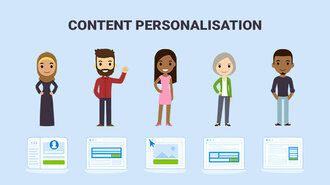Summary / TL;DR
Interactive content, which actively engages users through elements like quizzes, polls and AR/VR, significantly outperforms passive content in marketing outcomes. It achieves a conversion rate of around 70%, nearly double that of static formats, by encouraging participation and offering a more personalised experience. This type of content enhances dwell time, brand recall and social sharing, while also providing valuable user data for targeting and optimisation. Effective implementation requires aligning content with marketing objectives, ensuring cross-channel consistency, and tracking performance using KPIs. Advances in AI, 5G, and IoT are expected to further expand interactive content’s potential in future digital campaigns.
Content is king; there’s no doubt about that today. However, not all kings are created equal!
Even among the different kinds of content we see and consume, some outperform others. Sometimes, video outperforms audio; sometimes, written content is better than visual content. It all depends on the target audience, the desired outcome, and the niche.

However, all else being equal, it’s well established that interactive content performs better than passive content pieces. In fact, according to some studies, interactive content has a conversion rate of around 70%, almost double the conversion rate of passive content.
Passive content, whether written or visual, is the most common daily content. It doesn’t change with or accept user interaction. Interactive content, on the other hand, is just the opposite.
And today, we’re going to dive deep into it.
Want to receive updates? Sign up to our newsletter
Each time a new blog is posted, you’ll receive a notification, it’s really that simple.
What Is Interactive Content?
But what is interactive content, and how do you recognise it? Put, interactive content is content your audience can actively engage with. This type of content usually requires user input, which can be responded to and changed with said input.
Unlike static content, such as regular blog posts and infographics, which cannot receive user input, interactive content has interactive elements, such as polls and quizzes, which can record user input. Through its immersive nature, interactive content encourages active user participation and improves the user experience.

Interactive content has a clear advantage over passive content because it actively involves users. This participation often means they can modify and create aspects of the content themselves, making the experience more engaging and dynamic.
This makes interactive content a powerful tool for actively capturing audience attention and gleaning valuable insights into the target audience’s reactions to the content.
Interactive quizzes, infographics, and innovations like AR/VR allow interactive content to surpass static formats. These tools help build strong connections between users and brands, creating a more engaging experience.
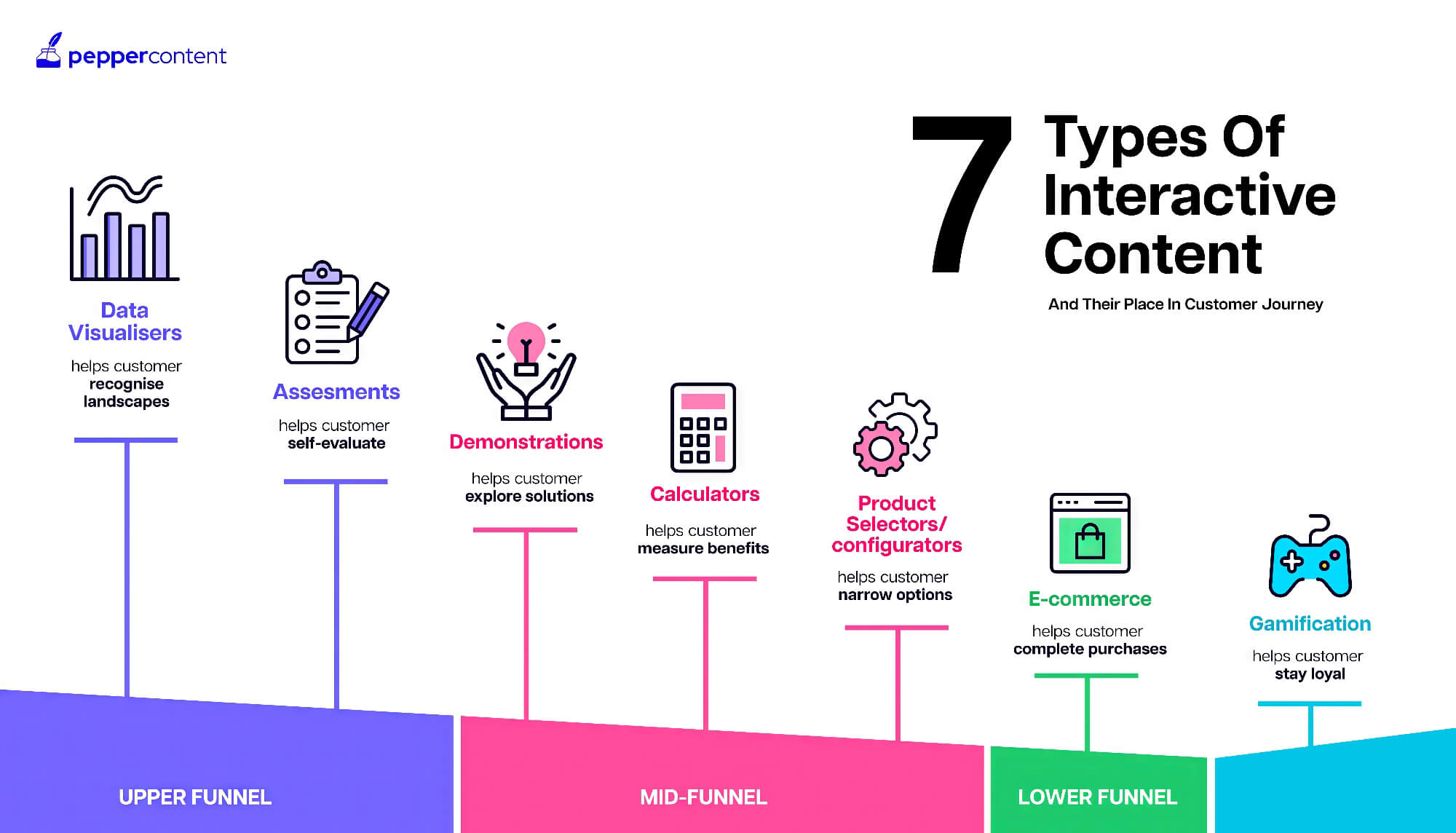
The Transformative Power of Interactive Content
Interactive content has fundamentally changed the way brands and businesses interact with customers.
Through interactive content marketing, users become a part of the content creation process rather than passive consumers. This creates a stronger and deeper bond between the brand and the customer, boosting brand loyalty.
Interactive content makes the customer an active contributor to creating interactive content. Through personalised and dynamic experiences, this type of content can customise interactions on a personal level based on customer preferences and consumption patterns. This rewards the user with a more compelling, personal and emotional experience.
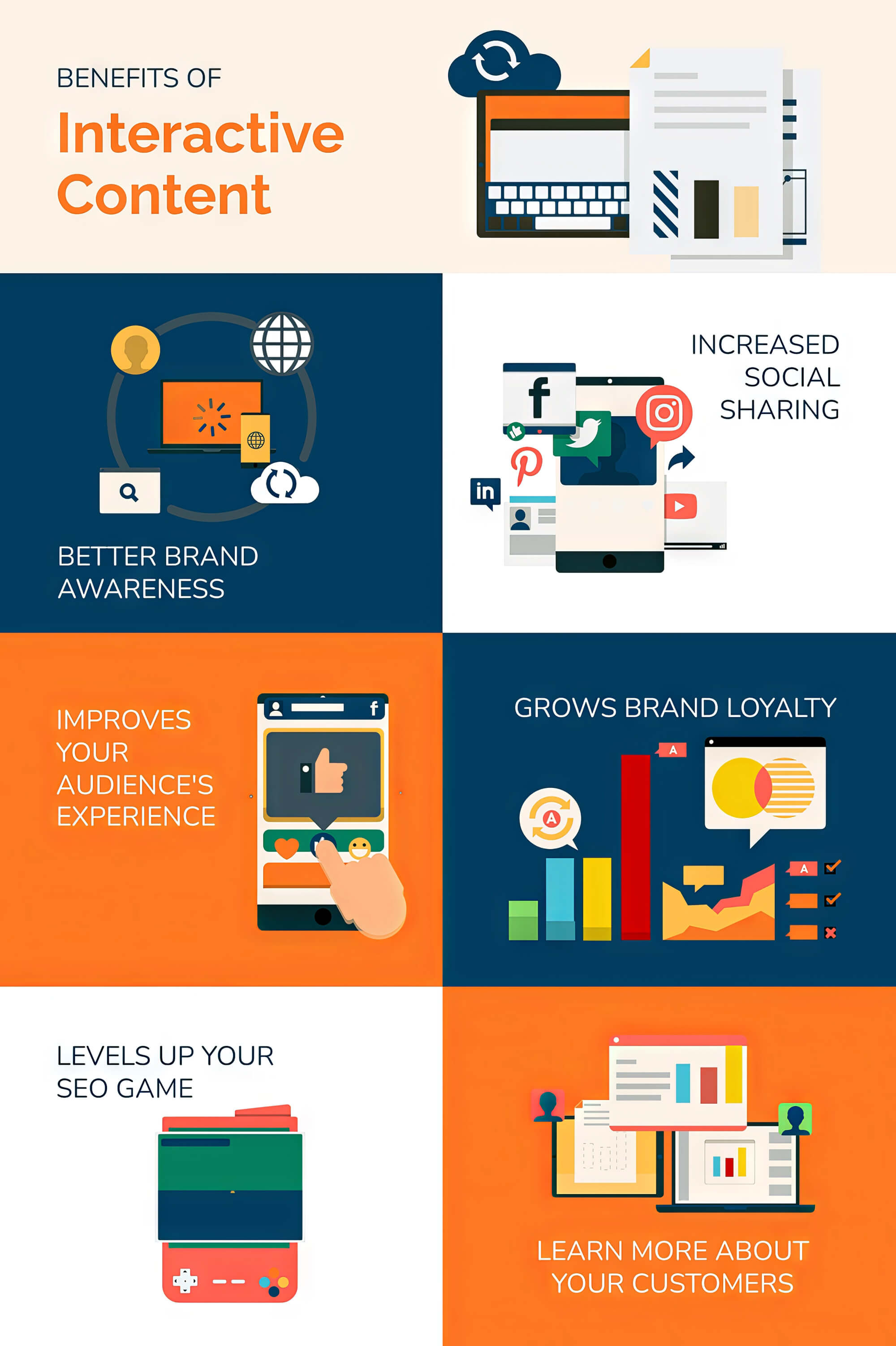
At the same time, interactive content is compelling as a data collection and insight-gleaning tool. As more users interact with and provide input into the content, brands can collect detailed information about their preferences. This data can prove vital for creating targeted marketing strategies based on complex data.
For example, interactive quizzes can help brands understand customer interests and requirements. From this, digital marketers can devise personalised and targeted follow-up strategies, increasing the chances of conversions. It also leads to more efficient and streamlined use of marketing resources.
Interactive content often results in longer engagement and higher conversion rates. Thanks to its entertainment value, it encourages customers to revisit, increasing social mentions and shares. This repetitive engagement turns customers into vocal brand advocates.
Critical Types of Interactive Content
We’ve recognised interactive content as a game-changer, so let’s dive into the various types available. From quizzes and polls to AR/VR and gamification, we’ll explore each type in detail in the following sections.
Quizzes and Polls
Although quizzes and polls as content formats aren’t new, they have become engaging and exciting ways to capture customer interactions in the digital marketing age.
Such interactive content helps attract customers and invites them to share their knowledge, preferences, and dislikes by actively participating.
Quizzes, in particular, help understand individual customer’s needs and tailor the content being offered to them accordingly. Conversely, polls help users voice their opinions and become part of a larger conversation, thus fostering community feelings.
Another aspect of quizzes and polls is their ability to capture a wide range of data, which can then be used to modify marketing efforts and product offerings accordingly.
A carefully crafted quiz can glean customer demographic data, gauge knowledge levels and understand needs. Polls are also great for understanding customer likes and dislikes and identifying trends.
They are also excellent tools for generating leads. Visitors attempting quizzes and polls can be provided with a freebie in exchange for their contact information. This can help build a lead database and nurture it using personalised content.
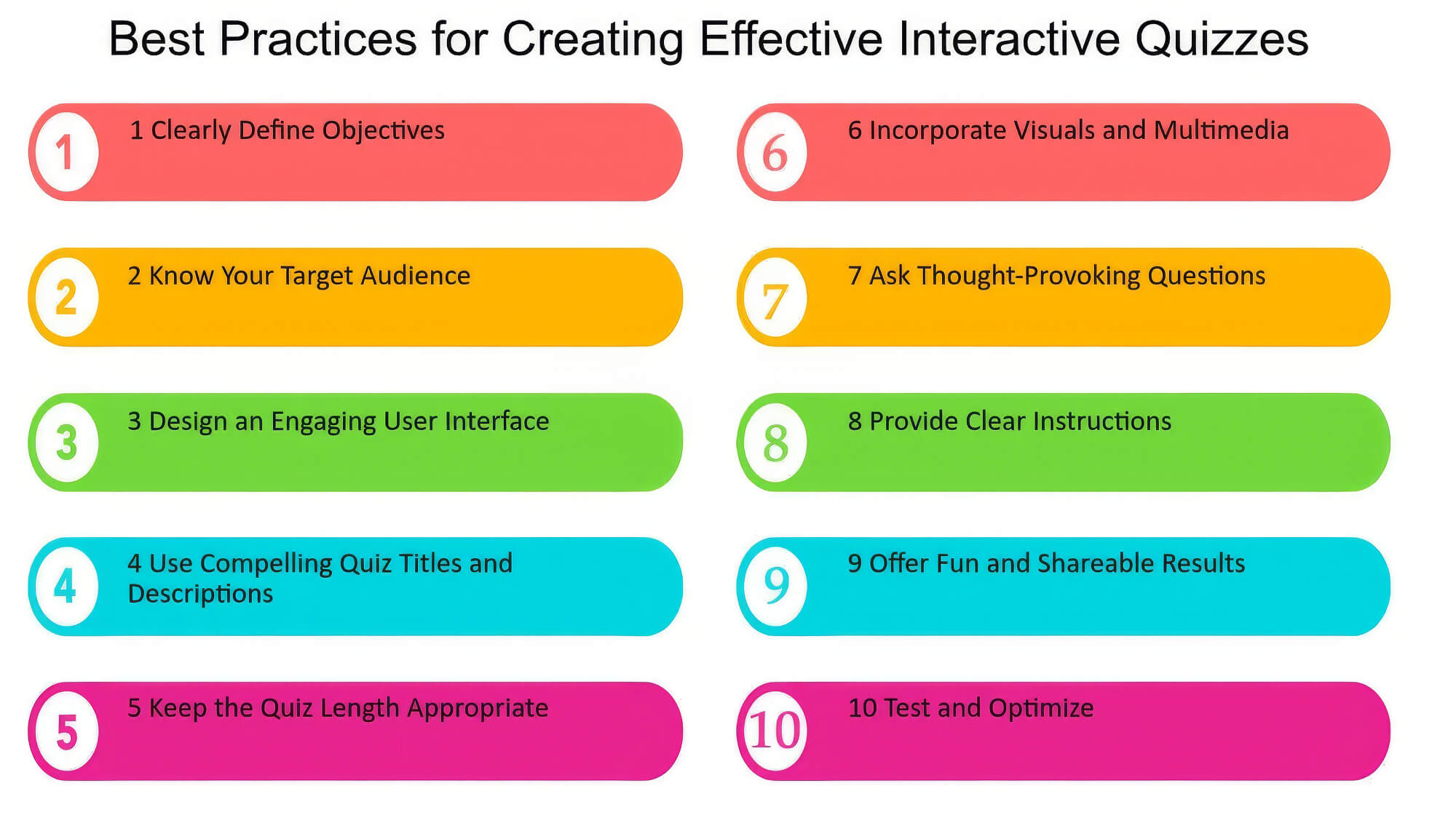
Interactive Videos
Interactive videos have taken visual content to the next level and transformed how audiences engage with content. Such content converts passive videos into interactive experiences by integrating interactive elements such as clickable hotspots, shopping links, and optional narratives that react to user input.
Interactive videos naturally improve dwell time as the interactive elements keep viewers engaged for longer. This leads to improved interaction and brand recall, which in turn leads to greater chances of conversions.
In addition, due to their interactive nature, such videos improve information retention by engaging the users’ cognitive senses on multiple levels. Interactive videos also provide much better opportunities for detailed and customised storytelling, cementing the brand in the viewers’ psyche.
Augmented and Virtual Reality
AR (Augmented Reality) and VR (Virtual Reality) are next-gen technologies that potentially transform the interactive content space completely. By blending and blurring the lines between the real and the virtual, these two technologies help create mixed-reality content beyond standard interactivity.
While AR overlays virtual elements within a natural environment through smartphones or AR goggles, VR transports the user into an entirely virtual setting, usually through a VR headset. Both have immense applications in the interactive content space.
With AR, you can preview how a new jacket looks on you or a friend without trying it on. This feature enhances the shopping experience and can significantly reduce e-commerce returns.
Similarly, using VR, you can take virtual tours of properties without the hassle of visiting them. VR can also help immensely in virtual training simulations such as medicine, aviation and driving, without real-world risk.
VR and AR can further help gamify interactive marketing efforts, thus increasing engagement and customer loyalty. And this is precisely what we will elaborate upon in the next section.
Gamification Elements
Gamification, which means incorporating game-like interactivity into marketing content, is a powerful tool in digital marketing today. Gamification includes features such as game points, challenges, leaderboards, etc., to convert bland content interactions into engaging experiences.
Gamification utilises the basic human desire for competition and a sense of achievement to turn content into an interactive experience that boosts engagement and motivation. For example, a fitness app can gamify daily, weekly and monthly fitness goals through a point-based system.
Digital trophies, such as accomplishment badges and leaderboard mentions, help create an environment of accomplishment and improve social interactions.
Through regular rewards and challenges, gamification can boost brand loyalty and keep customers returning for more.
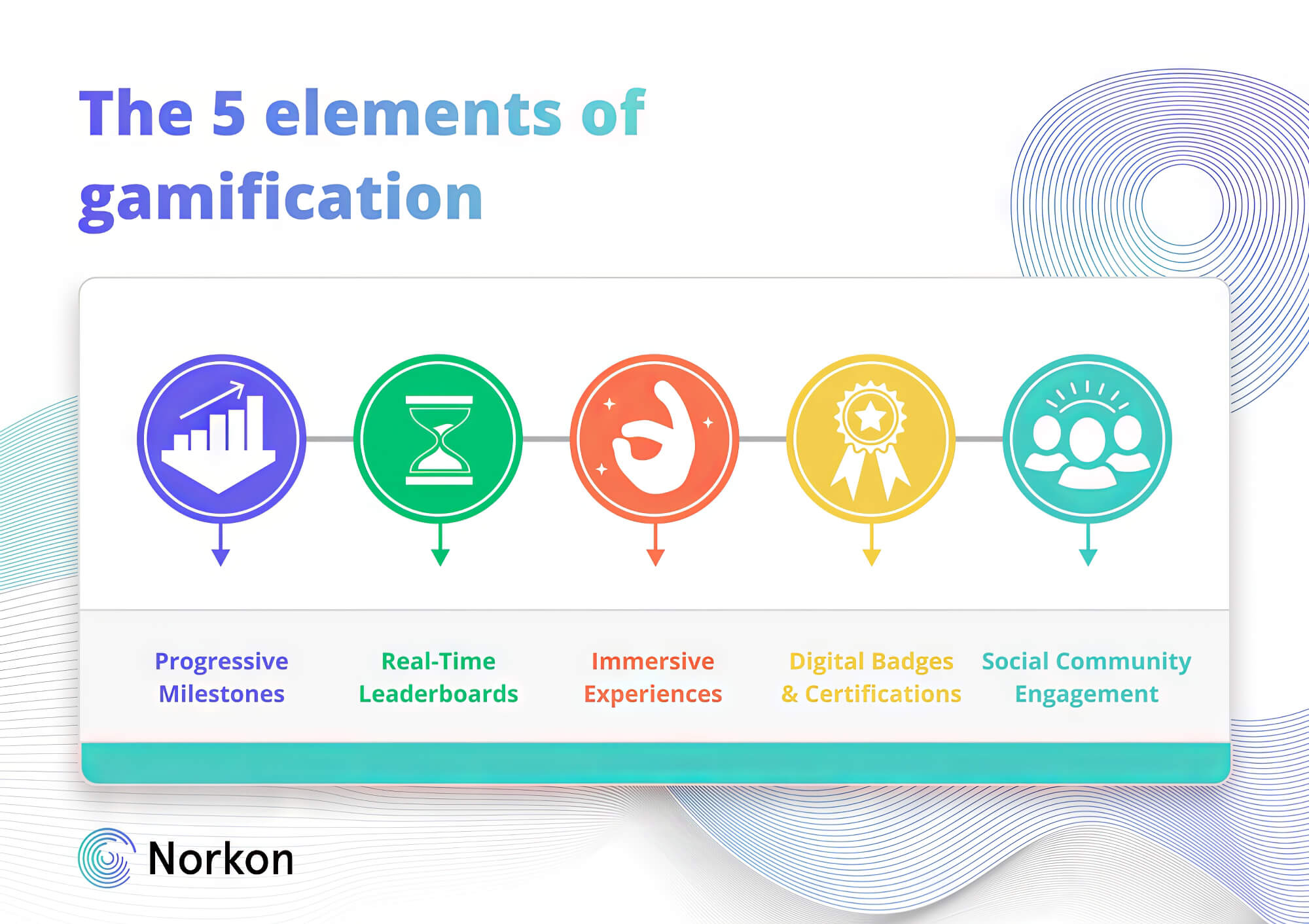
Benefits of Interactive Content
So, now that we’re well acquainted with interactive content and its different forms, let’s look at the detailed benefits of interactive content marketing. The critical advantages are listed and explained below in detail.
Increased Engagement and Dwell Time
Interactive content helps increase visitor engagement and dwell time on digital platforms such as apps and websites.
Compared to traditional content, interactive formats remove passive consumption and encourage active participation of visitors, thus forging a stronger bond between the brand and the user.
Users who interact with the content stay on the app or website longer, reducing bounce rates and increasing dwell time. These factors can also contribute towards SEO and increase SERP rankings.
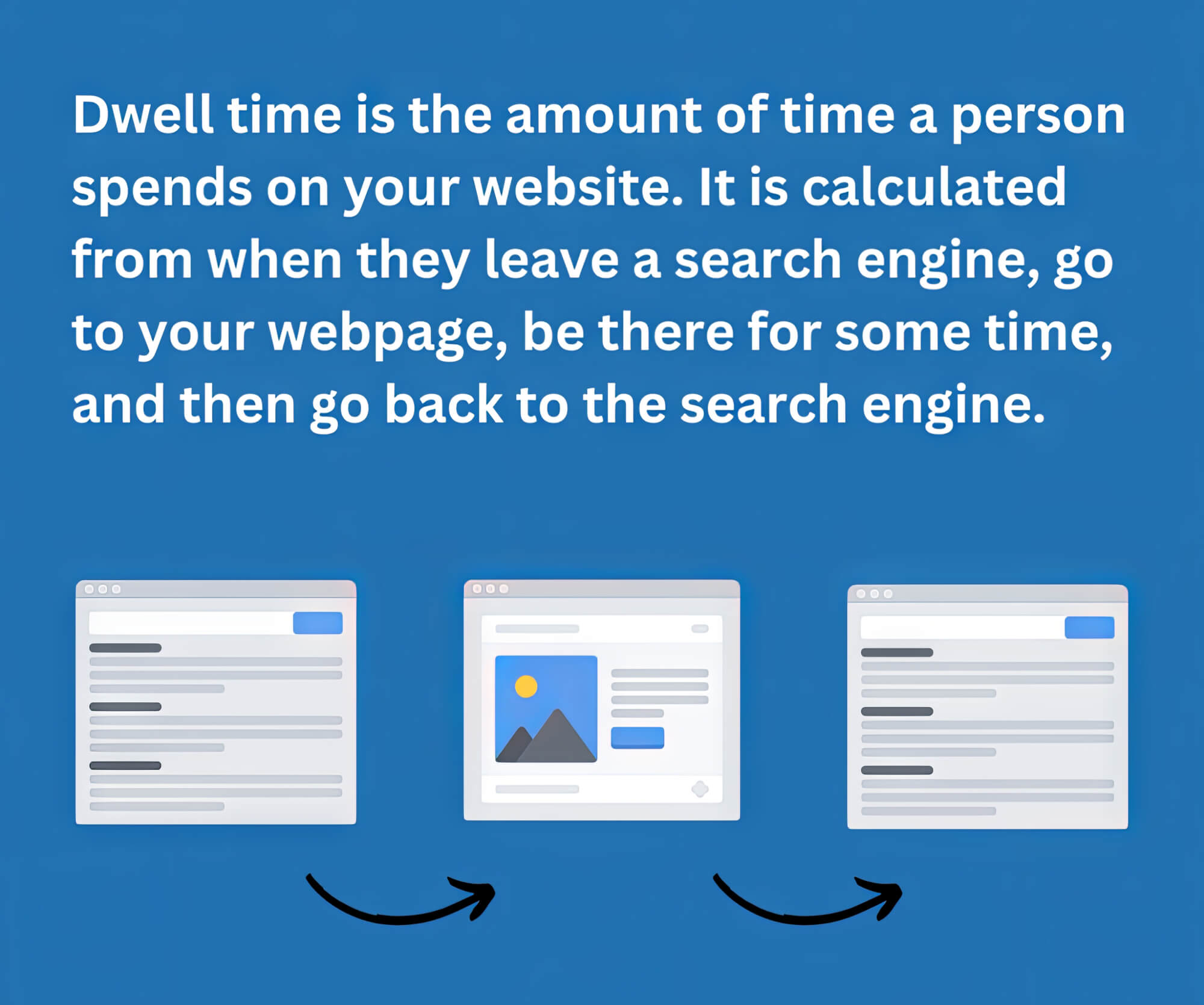
Valuable User Data and Insights
As mentioned, one significant benefit of using interactive content in your digital marketing efforts is the ability to collect detailed user data and glean valuable insights. Interactive infographics, quizzes and videos can help capture nuanced behavioural and demographic data, which can be used to streamline your marketing campaigns.
When you add interactive elements to the mix and create content, each element becomes a data touchpoint. The information gleaned from these touchpoints lets you personalise product offerings, often down to minute individual preferences. At the same time, they make data-driven decision-making easier.
Improved Brand Awareness and Recall
In today’s era of information overload, brand recall and awareness are vital for any business but not easy to achieve.
The engaging nature of interactive content helps users remember the brand and their favourable experiences with it longer. Such positive recall can improve brand loyalty and lead to better word-of-mouth marketing.
Interactive content helps create long-term relationships between the brand and the visitor/customer by building an emotional connection with the audience. This, in turn, leads to better business and a better experience for all stakeholders.
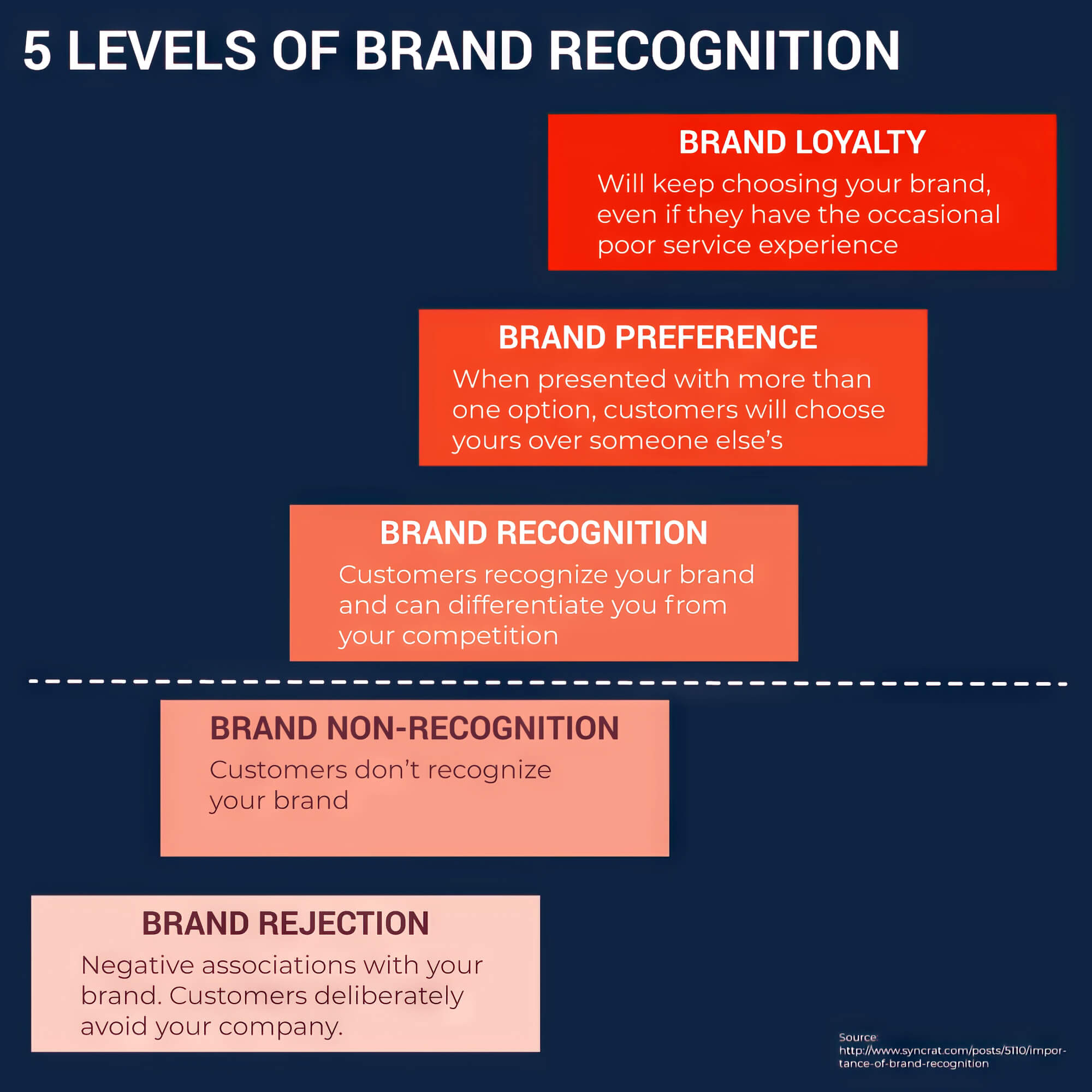
Strategies for Effective Implementation
Extolling the benefits of interactive content is easy; what’s hard is effectively creating and distributing it to achieve those benefits. This requires careful strategising, planning, and execution. Following certain best practices is essential to ensure the interactive content examples you share resonate with the audience.
At the same time, the content you share must align with your brand image, marketing goals, and revenue targets. Balancing all of these factors simultaneously can be challenging. In the following sections, we focus on each aspect of effective interactive content implementation so that you can create user-friendly content that generates leads and sales.
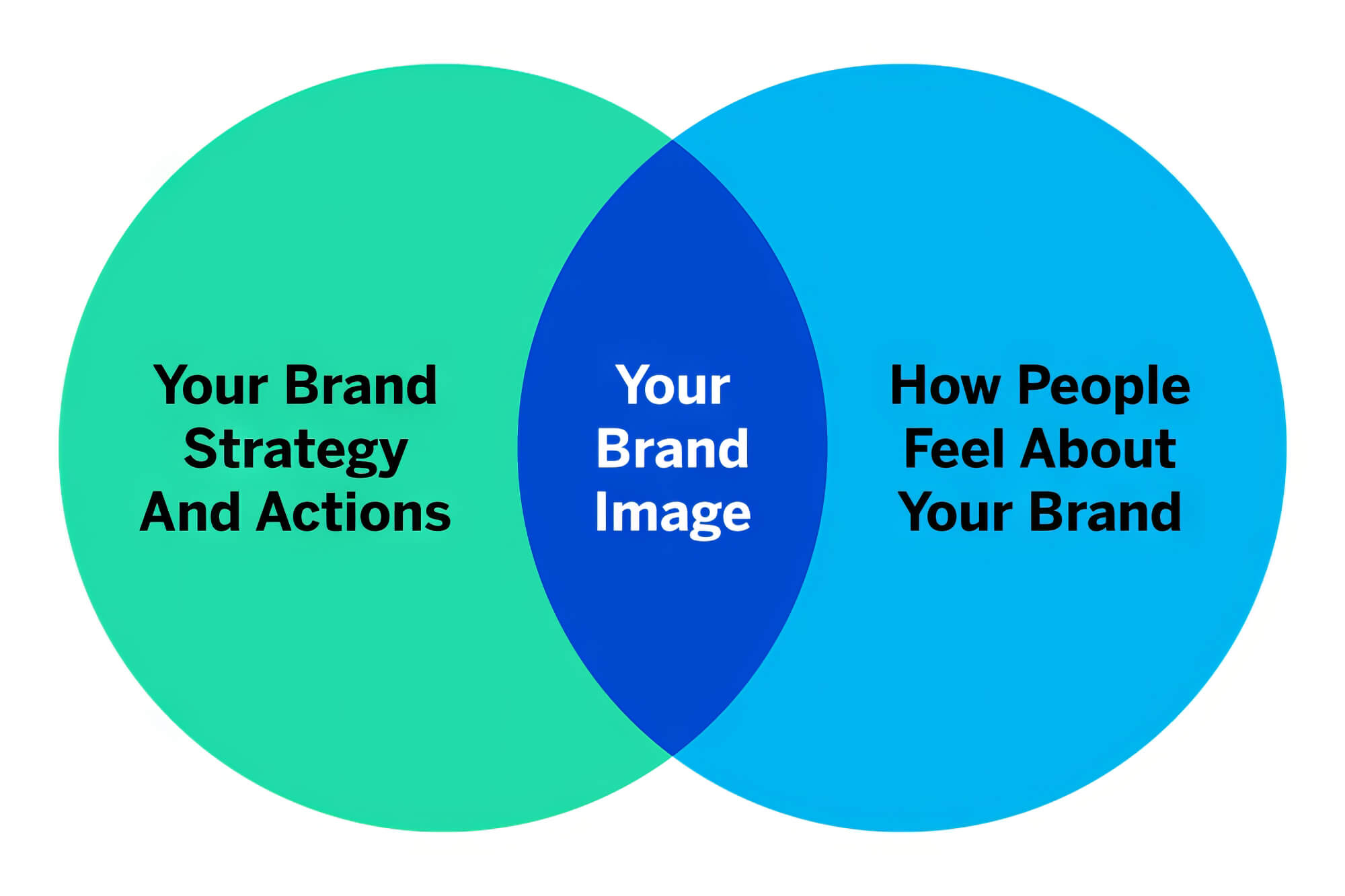
Understanding Your Target Audience
A detailed and granular understanding of the target audience is crucial for gaining active engagement and lead generation using interactive content. This can be achieved through effective audience research, followed by persona creation and buyer journey roadmap creation.
In the audience research phase, you must gather data on audience demographics, needs, requirements and behaviours. The information gathered in this phase will allow you to identify the content your target audience will respond positively to and focus on.
Next comes the persona development phase, where you must create detailed sample personas of your target audience based on the research insights gained in the previous phase. These personas will help you create content that addresses the target audience’s pain points.
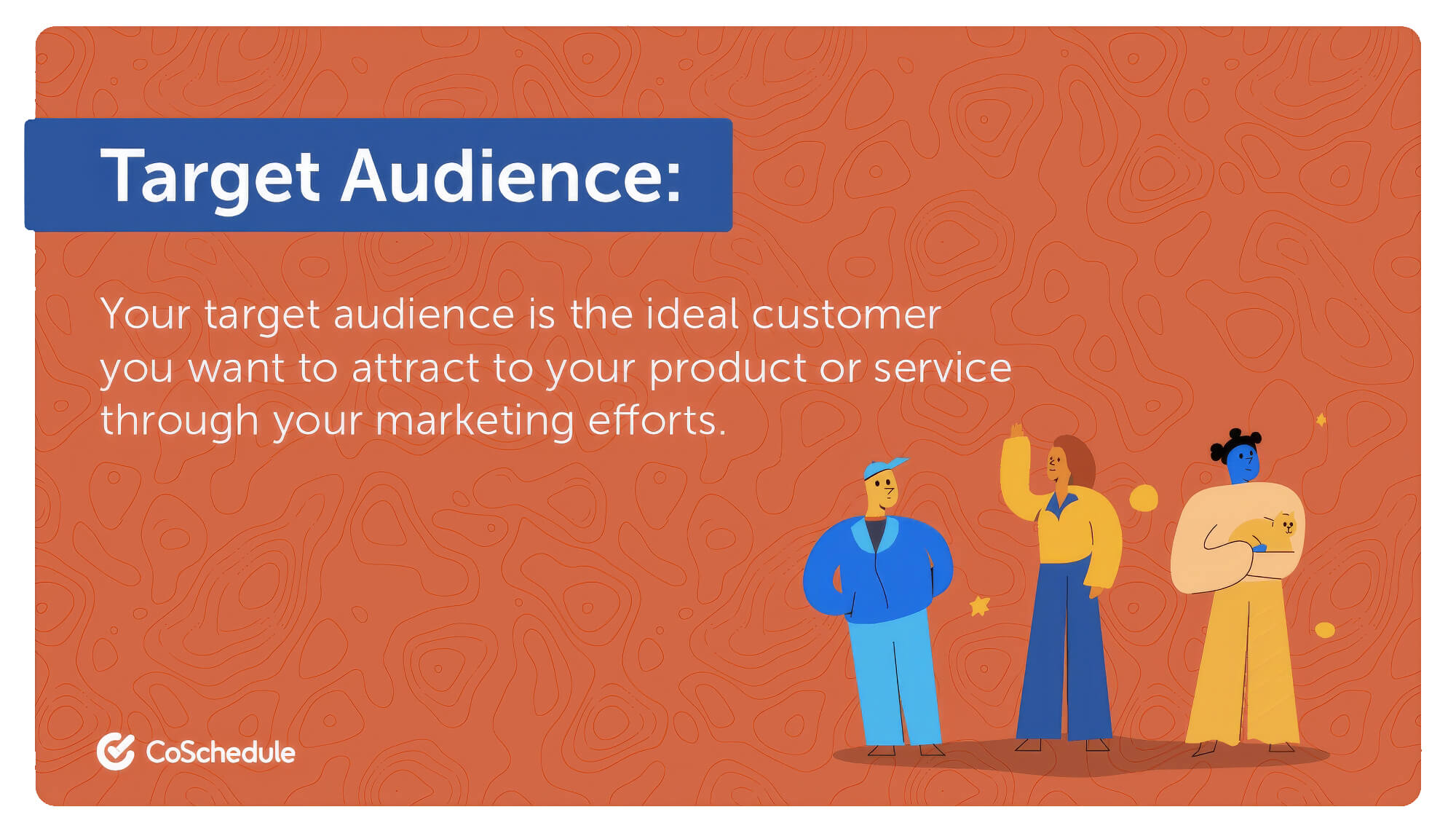
Finally, it would be best if you mapped out the user’s journey, which visualises the path users take from being first introduced to your brand to a conversion or desired action. Mapping and understanding this journey in detail lets you design interactive content that guides users from one stage to the next.
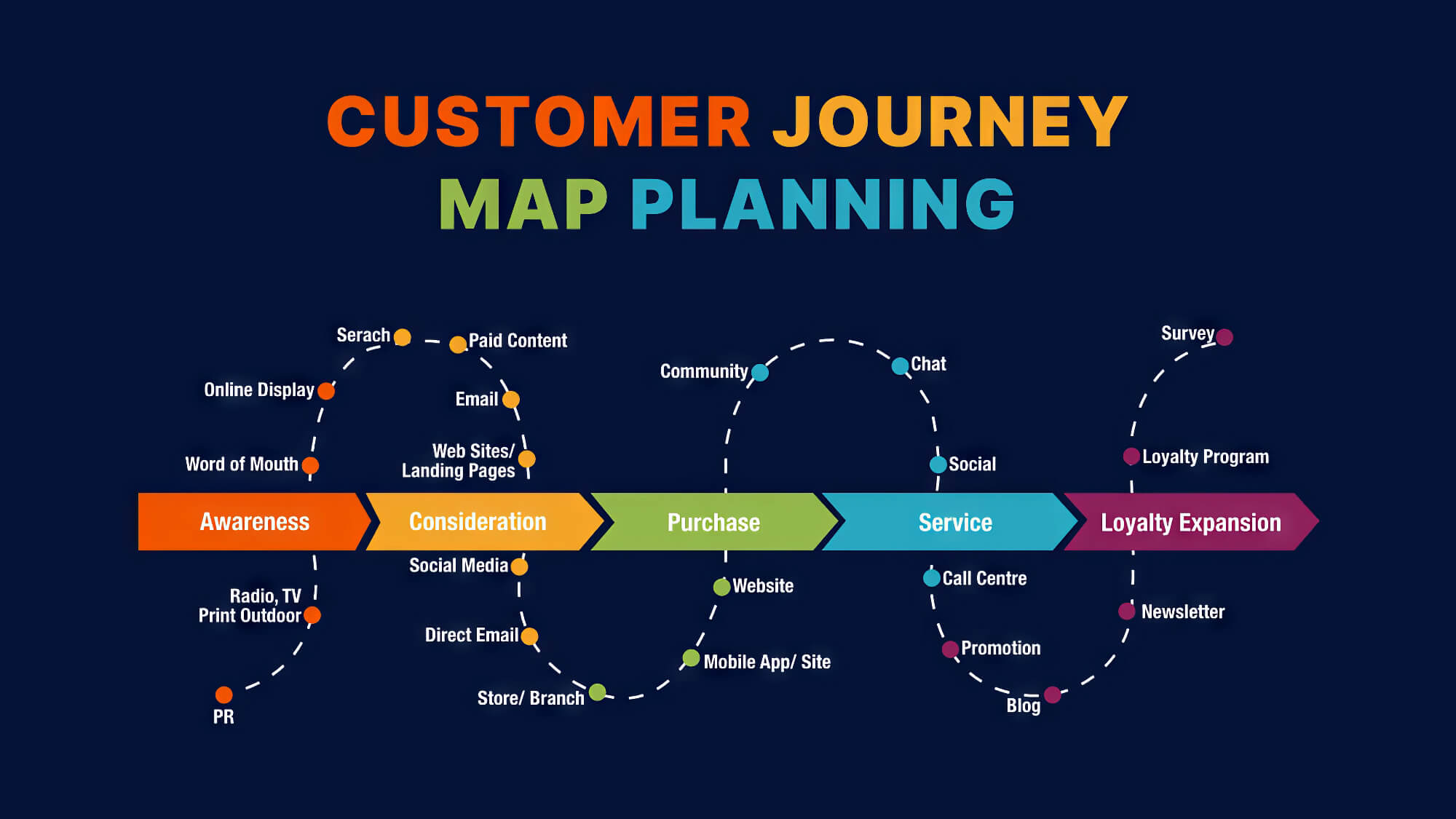
Aligning with Marketing Goals
Your marketing goals should drive the kind of content you produce, and this is no different for interactive content. Other types of content can serve different goals. For example, quizzes and polls can capture lead information, gamified experiences improve brand retention and awareness, and interactive infographics and video content can educate customers.
So, before you create content, define clear goals for your campaigns and the metrics to track for success. This way, you can gauge the efficacy of your content and adjust your strategy accordingly.
Seamless Integration Across Channels
Last but certainly not least, it is essential to ensure that your interactive content is seamlessly connected across all your distribution channels. Your website, social media pages, and emails should all provide a cohesive and consistent experience.
This is best accomplished using consistent visual elements such as colour themes and uniform fonts. Also, ensure all your content is designed to be responsive, which means it should provide the same experience regardless of device and screen size. It should also be tested to work with different operating systems and browsers.
When you successfully achieve this integration, you will strengthen your brand’s message and improve the overall user experience, leading to better engagement and outcomes for your efforts.
Measuring Success and Optimising
But how do you measure the performance levels of those outcomes? In today’s fast-moving content marketing scene, optimising content based on continuous measurement of success metrics is essential for sustained growth.
That’s why it’s crucial to understand how to analyse your interactive content marketing efforts and drive your business forward.
In the following sections, we’ll examine this process and how you can use it to your benefit.
Key Performance Indicators (KPIs)
The efficacy of any interactive content marketing campaign is tracked through measuring KPIs, which are quantifiable metrics that tell you how well your content efforts are supporting your business goals.
KPIs can range from engagement rates showing audience interaction levels to conversion rates, social shares, and feedback metrics. Remember, not every metric needs tracking simultaneously. Choose KPIs that best align with your marketing goals for effective measurement.
For example, if increasing brand awareness is your primary goal, you should measure engagement rates and social shares. However, if conversion tracking is the target, the conversion rate is the metric to use.
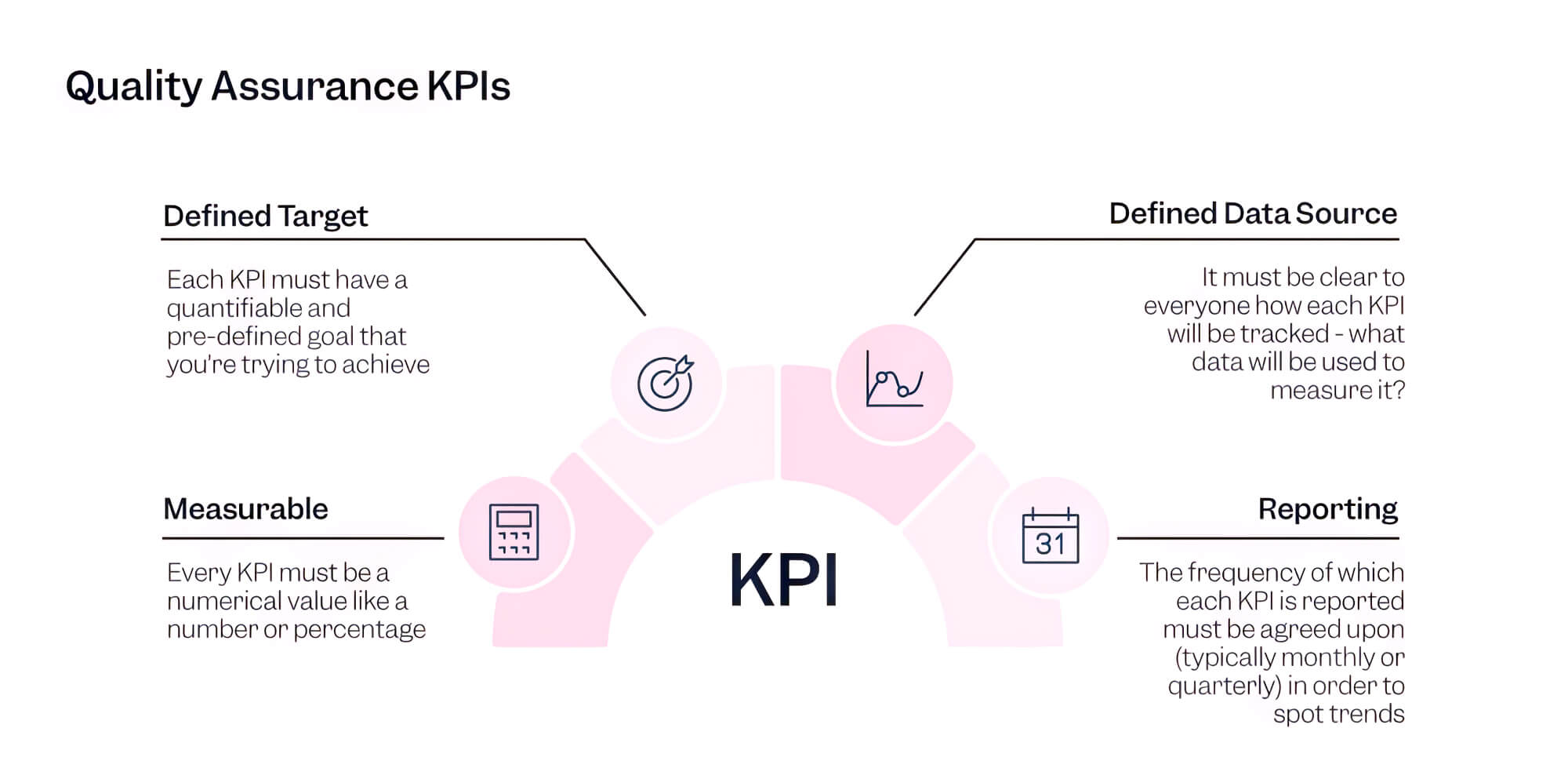
Data Analysis and Insights
After identifying and measuring the correct KPIs, the next step is to analyse the KPI data and draw insights from it. Here, you’ll examine several aspects, such as user interactions, behavioural patterns and preferences, to understand where and what to optimise.
For instance, user interaction data can reveal which parts of your interactive content customers are reacting to well and which aspects need improvement. If users don’t interact well with certain elements or drop off after a point, those elements and interaction flows must be improved to provide a better customer experience.
Behaviour pattern studies reveal how viewers navigate your content and their time in interactive sections. This allows you to modify and tailor content to provide more personal experiences that increase engagement.
Similarly, studying user preference data lets you understand what personal touch users want in your content and products/services. You can then take the required steps to alter them accordingly.
Bottom line: KPI measurement and data analysis are integral to interactive content creation as they allow you to optimise and personalise your efforts to achieve better results.
The Future of Interactive Content
Increasing interactivity will undoubtedly be the norm for content creation, driven by the latest technological advancements and evolving user needs. The world of interactive content is constantly in flux, with new disruptions arriving quickly. The following section will discuss emerging techs and trends shaping the future.
Emerging Technologies and Trends
AI and ML will always be at the forefront of tech trends, and this is no different for interactive content. AI algorithms can analyse user patterns and suggest improvements in content or even generate content and engage with users in real time.
This will be further facilitated with the rollout of 5G connectivity, which will promise faster content delivery. 5G will pave the way for more data-intensive content that is highly immersive, providing a spectacular user experience.
In addition, IoT (Internet of Things) will allow content and data to be more responsive to real-world changes by connecting numerous edge devices to the Internet. AR/VR will also play a significant role in this context, as will voice and gesture control.
Considering all these technologies together, we can safely say that the future of interactive content will offer exciting opportunities for both content creators and consumers.
The Power of Interactive Content
In the current digital marketing landscape, interactive content is pivotal in engaging audiences, building brand loyalty, and driving conversions.
By offering different formats, such as quizzes, polls, interactive videos, and AR/VR experiences, interactive content allows users to actively participate in the content consumption process, creating a more immersive and memorable experience than traditional static content.
Incorporating interactive content across different platforms into your marketing plan provides valuable opportunities to capture your audience’s attention, gather valuable information, and nurture deeper connections between your brand and target audiences.
By strategically implementing interactive content and adding interactivity to your existing content, you can significantly enhance your content marketing efforts and achieve measurable results.
Interactive content is highly shareable and can boost engagement, making it an important tool for attracting and retaining your audience’s attention. From interactive calculators to immersive AR/VR experiences, interactive content offers unique ways to engage users at different sales funnel stages, ultimately driving more engagement and conversions.
However, creating effective interactive content requires a thorough understanding of your target audience, seamless integration across different channels, and continuous measurement and optimisation based on key performance indicators.
As emerging technologies and trends continue to shape the future of interactive content, businesses must stay ahead of the curve to leverage these opportunities and deliver cutting-edge experiences to their customers.
By embracing the transformative power of interactive content and incorporating it into your marketing plan, you can differentiate your business in a crowded digital marketplace, build stronger relationships with your audience, and ultimately drive better business outcomes. So, if you haven’t already, it’s time to explore the potential of interactive content for your brand.
Ready to take your content marketing to the next level with interactive content?
Contact the team at sitecentre® today to learn how our cutting-edge tools and expertise can help you create engaging, data-driven interactive content experiences that drive results. Let us help you unlock the full potential of interactive content and transform your digital marketing strategy. Call us today to get started!



